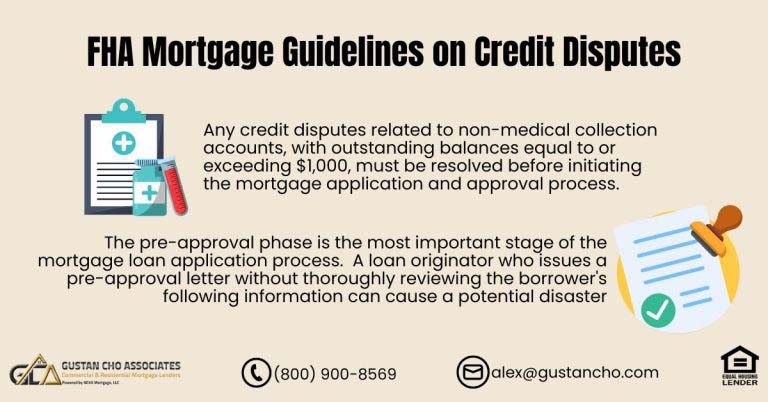This guide covers the importance of debt-to-income ratio in mortgages. Borrowers need to keep in mind the importance of debt-to-income ratio in mortgages when qualifying. DTI is what determines whether or not a borrower qualifies for a mortgage. You can have the best credit and credit scores in the world but if your debt-to-income ratios are too high, then borrowers will not qualify for a home loan.
The borrowers’ DTI is what determines how much of a mortgage they qualify for and how much the mortgage lender is willing to lend.
There are mortgage guidelines on debt-to-income ratio. Every loan program has different requirements. Debt-to-income ratios is equally as important as the borrower’s credit and credit scores. The debt-to-income ratio is part of the mortgage qualification process. In the following paragraphs, we will cover the importance of debt-to-income ratio in mortgages.
The Importance of Debt-to-Income Ratio in Mortgages Explained
A debt-to-income ratio (often abbreviated DTI) is the percentage of a consumer’s monthly gross income that goes toward paying debts. Below is a detailed summary and explanation of the Importance of debt-to-income ratios in mortgages from Wikipedia:
Speaking precisely, DTIs often cover more than just debts; they can include certain taxes, fees, and insurance premiums as well
Nevertheless, the term is a set phrase that serves as a convenient, well-understood shorthand.). There are two main kinds of debt-to-income ratio we will be discussing in the next paragraph. The front-end and the back-end debt-to-income ratio.
Speak With Our Expert For Debt-To-Income In Mortage Loans
Realizing the Importance of Debt-to-Income Ratio in Mortgages
The debt-to-income (DTI) ratio is a crucial factor in the mortgage lending process and plays a significant role in determining a borrower’s eligibility for a home loan. The higher the risk of a borrower, the higher the rewards. Higher rewards for a lender means a higher rate and possibly upfront discount points.
Borrowers, too, should be aware of their DTI ratio and work to keep it within acceptable limits to improve their chances of securing a mortgage with favorable terms.
The DTI ratio is a measure of a borrower’s ability to manage monthly debt payments in relation to their gross monthly income. It is expressed as a percentage and is calculated by dividing the total monthly debt payments by the gross monthly income.
Why Debt-to-Income Ratio is Important
Key reasons why the debt-to-income ratio is important in the context of mortgages is risk assessment. Lenders use the DTI ratio to assess the level of risk associated with lending money to a particular borrower. High debt-to-income ratio leaves less room for new financial obligations, such as a mortgage.
A higher DTI ratio indicates that a significant portion of the borrower’s income is already committed to debt payments.
Lenders typically have maximum DTI ratio limits that borrowers must meet to qualify for a mortgage. These limits vary but are often around 43% to 50% of the borrower’s gross monthly income. If a borrower’s DTI ratio exceeds the lender’s threshold, they may have a harder time getting approved for a mortgage.
Understanding Importance of Debt-to-Income Ratio in Mortgages
The DTI ratio helps determine the borrower’s ability to afford the monthly mortgage payments. Lenders want to ensure that borrowers can comfortably manage their existing debts along with the new mortgage without facing financial strain. A lower DTI ratio generally indicates greater financial stability. Lenders are more likely to approve loans for borrowers with lower DTI ratios because it suggests that a smaller portion of their income is committed to debt, leaving more room for unexpected expenses or changes in financial circumstances.
Importance of Debt-to-Income Ratio in Mortgages For Regulatory Compliance
In some countries, regulatory guidelines may prescribe maximum DTI ratios that lenders must adhere to when issuing mortgages. Compliance with these guidelines helps ensure responsible lending practices and reduces the risk of borrowers taking on more debt than they can handle.
Lenders often view lower DTI ratios as a sign of lower risk, and as a result, borrowers may be offered more favorable terms on their mortgage.
Lenders use the DTI ratio as a predictive tool to assess the likelihood of a borrower defaulting on the mortgage. By evaluating the borrower’s debt obligations relative to their income, lenders can estimate the borrower’s capacity to meet their financial obligations over the life of the loan.
Get Approve For FHA Mortgage Loans, Click Here
Types of Debt-to-Income Ratios
Below is information obtained by Wikipedia with regards to the two types of debt-to-income ratios used by mortgage lenders: The first DTI, known as the front-end ratio, indicates the percentage of income that goes toward housing costs. For renters, the housing costs is the rent amount and for homeowners is PITI. The front-end debt-to-income ratio is calculated by dividing the PITI by the monthly gross income.
The PITI stands for principal and interest, mortgage insurance premium [when applicable], hazard insurance premium, property taxes, and homeowners’ association dues [if applicable]).
The second type of debt-to-income ratio is commonly referred to as the back-end debt-to-income ratio. The back-end debt-to-income ratio is the sum of the PITI plus the sum of all other minimum monthly payments divided by the borrower’s monthly gross income. We will cover the importance of debt-to-income ratio in mortgages.
Case Scenario on Calculating Debt-to-Income Ratio
In order to qualify for a mortgage for which the lender requires a debt-to-income ratio of 50% for Fannie Mae and Freddie Mac. There is no front-end debt-to-income ratio requirements on conventional loans. HUD DTI requirements for borrowers with at least 620 FICO is 46.9% front-end and 56.9% back end DTI to get an approve/eligible on FHA loans.
The back end debt-to-income ratio is the PITI plus all monthly payments divided by the borrower’s gross income.
The back-end debt-to-income ratio is the percentage of income that goes toward paying all recurring debt payments. This includes the housing expense, and other debts such as credit card payments, car loan payments, student loan payments, child support payments, alimony payments, and legal judgments.
What DTI limits are used in qualifying borrowers? United States
VA loans do not have a maximum cap on debt-to-income ratio. There is no maximum debt-to-income ratio caps on VA loans. You can surpass 60% DTI on VA loans as long as you have strong residual income. There is no maximum debt-to-income ratio caps on VA loans. Below is the theory on debt-to-income ratios. However, this theory not exactly correct.
In the U.S., for conforming loans, the following limits are currently typical: Conventional financing limits are typically 45% FOR FANNIE and 50% for FREDDIE. FHA and VA limits are only calculated with one DTI of 41. (This is effectively equal to 41/41, although VA does not use that notation.) USDA 29/41.
The above definition on debt-to-income ratio are on all the exams. However, the above statement is not correct. It is only correct when it comes to passing the NMLS mortgage exam or completing your annual continuing eduction. Borrowers with lower DTI ratios may qualify for better interest rates and loan terms.
Importance of Debt-to-Income Ratio in Mortgages on Non-Conforming Loans

The traditional mortgage banking industry was shadowed by an infusion of lending from the shadow banking system that eventually rivaled the size of the conventional financing sector.
The subprime mortgage crisis produced a market correction that revised these limits downward for many borrowers. This reflected a predictable tightening of credit after the laxness of the credit bubble. Creative financing ( riskier ratios) still exists. It is now granted with tighter, more sensible qualification of customers.
Click Here For Non-Conforming Loans
Historical Limits and The Importance of Debt-to-Income Ratio in Mortgages
The number one concern lenders and creditors have is the ability of borrowers to repay their debt. No matter how great the borrower’s credit profile is, if they do have not enough income to make payments on their debts, they will default on the loan.
Any creditor’s main concern is the borrower’s ability to repay their loan. The main concern all creditors have is the borrower’s income stability.
This is why lenders go through such an extensive vetting process with employment. Longevity and potential stability of the borrower’s employment as well as the past income history are all analyzed and included when the mortgage underwriter is calculating the debt-to-income ratio. Nobody can predict the future.
How Do Lenders Calculate Debt-to-Income Ratios
Lenders will use an applicant’s prior credit and income history as an indication to predicting the future payment of the borrower. Mortgage underwriters will take several factors when coming up with a debt-to-income ratio number prior to issuing a loan commitment on a borrower.
Credit scores determine the borrower’s risk level for the lender. However, credit scores are not everything. Lenders price rates from based on credit scores.
Mortgage underwriters look at prior payment history, length of credit tradelines, prior derogatory items, employment gaps, the pattern of changing jobs, and the ability for a borrower to be able to get a job in the event if they are to become unemployed are all factors. In summary, the debt-to-income ratio is a crucial metric in the mortgage lending process, helping lenders assess the borrower’s financial health, determine loan eligibility, and mitigate the risk of default.








